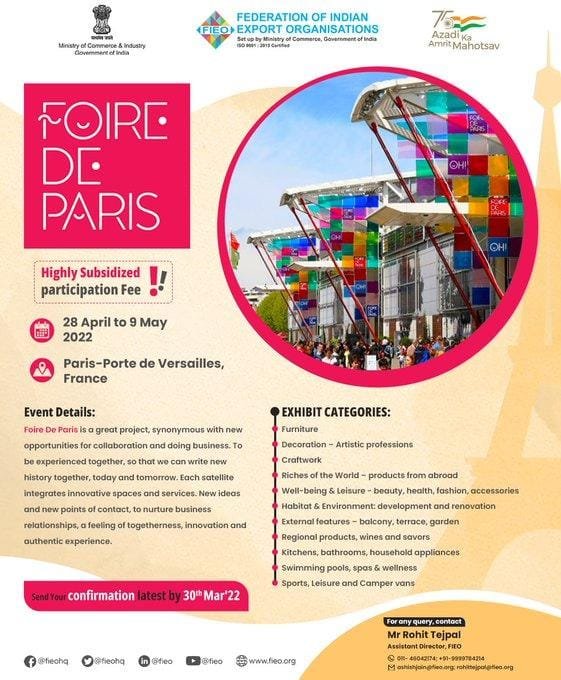Rigorous efforts for deepening integration in the Global Value Chains, says Ministry
A detailed strategy was in place, including specific targets set such as country-wise, product-wise, monitoring and course correction, for achieving US$400 billion export target, a key milestone in India’s Aatmanirbhar Bharat journey led by Prime Minister Narendra Modi.
“I congratulate our farmers, weavers, MSMEs, manufacturers, exporters for this success,” said the Prime Minister on 23 Mar 2022, applauding the US$400 billion achievement.
Minister of Commerce and Industry Piyush Goyal elaborated, “The ‘whole of govt approach’ had been taken to the next level to ‘whole of country approach’ to acheive this remarkable target.”
The export achievement was not just about meeting targets but about building confidence and about exploring new markets, he added.
The Minister also applauded exporters for maintaining the momentum throughout the year despite challenges caused by successive COVID-19 waves.
He said that the achievement truly called for a celebration and added that it sent out the message of a confident future for the nation. India is ready for the World with a new identity of quality and reliability, he said.
The disaggregated targets have enabled tight monitoring by Country, Region, Mission and Export Promotion Councils.
The Commodity Divisions of Department of Commerce have held regular review meetings with the concerned export promotion committees under their jurisdiction.
Thus, notwithstanding the challenges posed by successive waves of Covid, India’s merchandise trade performance has shown impressive growth and exports remained above US$30 billion a month for eleven consecutive months (likely to be twelve consecutive months at the end of March) during April to February. December 2021 in particular recorded the highest ever monthly merchandise exports recorded at US$39.3 billion.
The government has been working round the clock to provide a conducive environment and infrastructure for the industry and exporters to enhance their export performance. Policies and schemes aligned with the goal are being introduced and implemented for their benefit.
The smooth roll out of RoDTEP and ROSCTL even in the midst of the pandemic reflects the strong resolve of the government to walk the talk. The Interest Equalisation Scheme has been extended to exporters and is likely to benefit a large number of MSME exporters.
Rigorous efforts for domestic capacity enhancement for deepening integration in the Global Value Chains are being made by working in close partnership with the industry to identify areas where India has competitive advantages.
“We will, therefore, work on strengthening our capabilities and create for the world on the lines of Make in India. PLI schemes for 13 key sectors of manufacturing starting from FY 2021-22 have been announced,” said the Ministry.
A policy shift in the approach envisaged in the Districts as Exports Hub (DEH) initiative has been adopted to boost local production and make Districts active stakeholders in driving export growth of local products and services. Consistent efforts to build and provide export promoting infrastructure are being undertaken via providing appropriate funding, insurance, credit provisions among others.
Thus, an effort has been made to set up a firm backward – forward linkage, starting from the district level to the overseas market with the help of multiple stakeholders.
In between, the emphasis has been effective and efficient coordination among all stakeholders i.e. district units, State and Central Governments, line Ministries, EPCs, MSMEs exporting communities and our mission overseas to ensure breaking of silos to achieve a coherent and coordinated action for fulfilment of exports target.
Commenting on India reaching a new milestone of US$400 billion of merchandise exports in the current financial year, FIEO President Dr A Sakthivel said, “The ecosystem provided by the Government through various supportive measures contributed in no less measure. What is remarkable in this year’s exports is across sectors growth exhibited by both the employment-intensive and sunrise sectors of exports.
“These figures also reflect that exports have become more inclusive with participation of craftsmen, artisans, farmers, fishermen, women entrepreneurs and small businesses.” fiinews.com











